Computing Power is King: Global Treasure Map
Text: Song Shuangjie, CFA; Cheng Dongfeng
Source: Token Research Institute
Introduction
With the increasing consensus of BTC, BTC "mining" is often referred to as the "gold rush" in the new era. A huge industry chain has been formed around BTC mining. This article will try to show the treasure map of BTC mining.
- Popular Science | Crypto War, Blockchain Technology
- Is a cryptocurrency scam a new bottle of old wine? Tyler Winklevoss teaches you how to see through at a glance
- Why did Ethereum delay the "glacial period" three times? The new hard fork is coming again!
Summary
In recent years, the fiery "blockchain" originated from the BTC created by the mysterious character Satoshi Nakamoto. The process of obtaining new BTC through competing bookkeeping rights is aptly called "mining", which is analogous to the method of obtaining BTC stipulated by network protocols as "gold rush" or "mining" in the physical world. BTC mining has gone from CPU mining to GPU mining, to FPGA mining, and eventually evolved into professional ASIC mining machines. After the development of the ASIC mining machine, the prelude to the mining "arms race" officially began. With the continuous upgrading of mining equipment, BTC's entire network computing power is also rising.
The three major miners of Bitmain, Jianan Yunzhi and Yibang International have made a lot of money in the "gold rush" of BTC mining, becoming a veritable case of "selling shovel during the gold rush".
A huge industrial chain has been formed around BTC mining, from the upstream mining machine chip manufacturing to the midstream mining machine production, and finally implemented into the "mining" behavior of the mine and pool.
A mine is a collection of mining hardware, and a mining pool is a collection of mining machine output. Miners connect their own mining machines to a certain mining pool, contribute computing power to the mining pool, and jointly mine to obtain revenue, and the revenue is distributed according to the contribution of computing power. Miners join together to compete with other mining pools through mining pools, which can not only make the income more stable, but also avoid running full nodes. Cloud mining refers to the way that miners purchase cloud computing power directly from institutions or individuals. It is the most convenient and quick way to participate in mining.
Risk reminder: quantum computer technology advances rapidly, market trend risks
table of Contents
1 Blockchain technology is highly valued by countries and Internet giants
1.1 Blockchain as a National Strategic Technology
1.2 Blockchain originates from BTC
2 The gold rush in the new era
2.2 Upgrade of mining equipment
3 BTC mining treasure map
3.1 Mining Machine Manufacturers-Sell Shovel During Gold Rush
3.2 Mines-the forefront of the "gold rush"
3.3 Mining Pool-Unity is Strength
3.4 Cloud mining-a minimalist model for participating in mining
text
1 Blockchain technology is highly valued by countries and Internet giants
1.1 Blockchain as a National Strategic Technology
On the afternoon of October 24, 2019, during the eighteenth collective study on the development status and trends of blockchain technology, it was stressed that the integrated application of blockchain technology plays an important role in new technological innovations and industrial changes; we want Take blockchain as an important breakthrough in independent innovation of core technologies, clarify the main attack direction, increase investment, focus on overcoming a number of key core technologies, and accelerate the development of blockchain technology and industrial innovation.
China has always attached great importance to blockchain technology. As early as December 2016, the blockchain has been written into the "State Council's Notice on Printing and Distributing the National Thirteenth Five-Year Plan" National Informationization Plan as a strategic frontier and disruptive technology.
In recent years, more and more institutions have begun to attach importance to and participate in the research of Blockchain technology. In the field of Internet finance, blockchain and artificial intelligence (AI), cloud computing, and big data are listed as four major revolutionary technologies. Internet giants such as BATJ (Baidu, Ali, Tencent, and JD.com) have launched the "ABCD (Artificial Intelligence, Blockchain, Cloud Computing, Big Data)" strategy.
1.2 Blockchain originates from BTC
Blockchain technology originated from the BTC created by the mysterious character Satoshi Nakamoto. It is essentially a distributed ledger (database) maintained by multiple participating nodes. It does not rely on third parties and only stores network data through distributed nodes. , Verification and communication. Compared with a centralized database, the blockchain has the characteristics of anti-tampering, openness and transparency.
2 The gold rush in the new era
2.1 BTC “mining” by computing power
The BTC network is an anonymous blockchain network that any node can join freely. Through the clever POW mechanism, a consensus is reached that all nodes participate in and meet the consistency, and the consistency of the credibility of the application environment is achieved. Satoshi Nakamoto proposed the POW consensus mechanism in the BTC white paper "A Peer-to-Peer Electronic Cash System". Its core idea is to require nodes in the network to pay a certain amount of computing power to compete for the right to record blocks (that is, the right to record) To ensure consensus consistency.
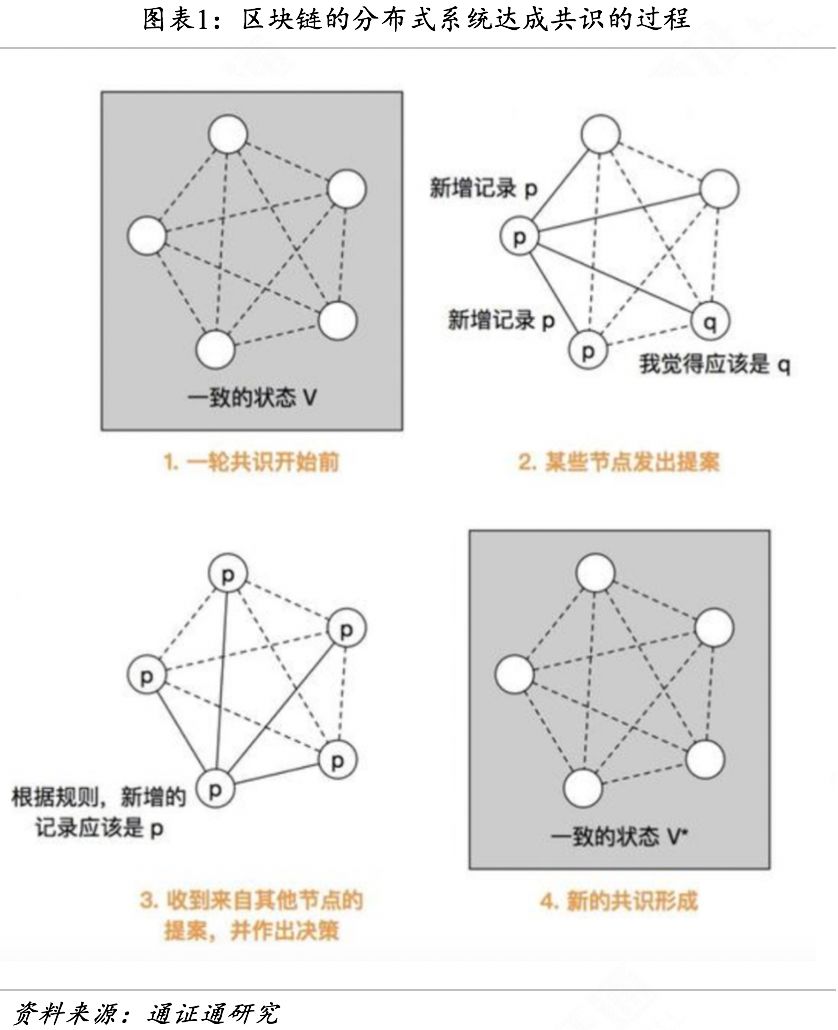
If miners perform two SHA256 function calculations on the block header (block_header), if it is less than the difficulty target (target_bits), that is, SHA256 (SHA256 (block_header)) <target_bits, it indicates that the miner has obtained the accounting rights of the current block. Otherwise, the miners will change the nonce value until the above inequality is satisfied and the accounting right is obtained.
The target_bits is set according to the difficulty of the network. The difficulty will be adjusted according to the specified algorithm after every 2016 blocks (about 14 days) are generated. The goal is to ensure that the interval between block generation in the network is about 10 minutes.
SHA256 (x) represents the hash function, and the range of values of x is called the search space of the node. The search space of the nodes in the POW mechanism is all positive integers. Due to the characteristics of the hash function, the left side of the inequality can be considered as a random variable that is uniformly distributed over the range of the hash function. The probability depends on how fast it calculates the hash.
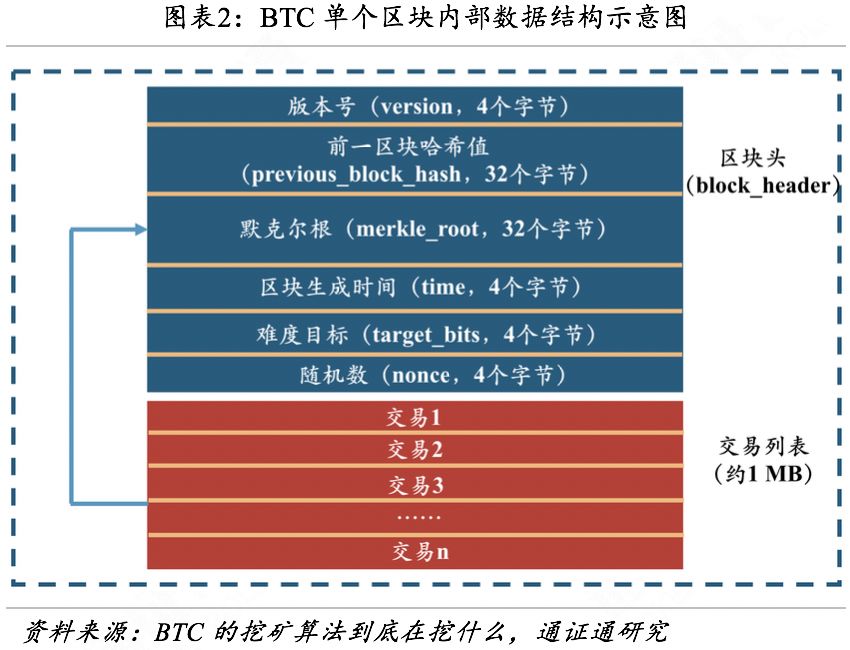
The process of participating nodes acquiring new BTC through competing bookkeeping rights is known as "mining". The so-called "mining" is to analogize the method of obtaining tokens stipulated in network protocols to the physical world's "gold rush" or "mining" ".
The total amount of BTC is constant at 21 million, and the "miner" nodes that generate the block will receive block rewards. At present, about 18 million BTC are "mined". According to the BTC network protocol, the BTC "mining" block reward will be halved every 210,000 blocks generated (approximately four years). Initially, each block will generate a reward of 50 BTC. After two halvings, It has now dropped to 12.5 BTC. It is estimated that in May 2020, the BTC block reward will usher in the third halving.
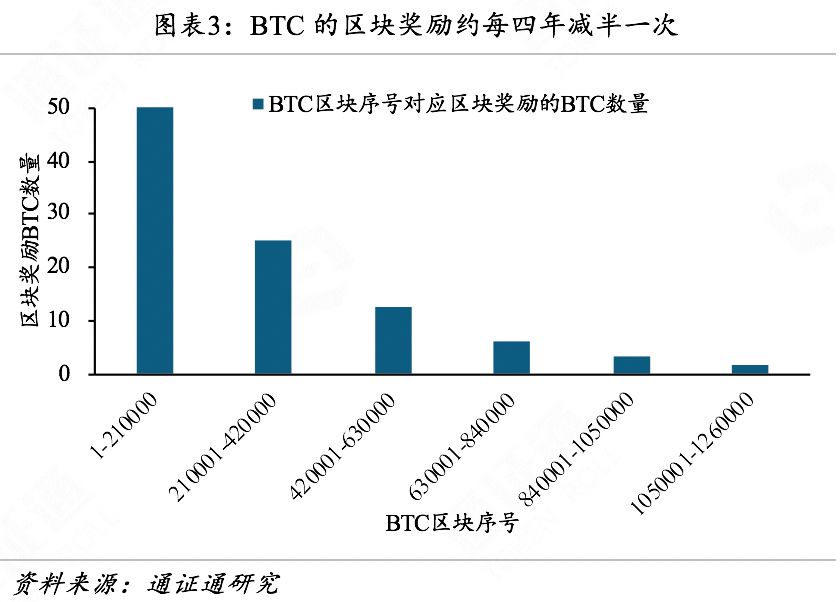
2.2 Upgrade of mining equipment
BTC's mining has gone from CPU (central processing unit) mining to GPU (graphics processing unit) mining, then FPGA (field programmable gate array) mining, and eventually evolved into a professional ASIC (application-specific integrated circuit) mining Machine mining.
Satoshi Nakamoto's original vision was that everyone could use their own computing power (PC computer computing power) to participate in BTC's mining to build a decentralized network. As Satoshi Nakamoto said in the BTC white paper, "They vote with their CPU power."
Because in the POW consensus mechanism, the probability of a node obtaining accounting rights is related to the proportion of the node's computing power, which means that under the condition that the total mining power remains unchanged, the greater the computing power of a single node, the more BTC blocks are obtained. The greater the probability of reward. In 2011, the GPU began to replace the CPU for mining. Compared with the CPU, the GPU's computing power has increased by dozens of times.
The performance of the FPGA mining machine is the same as that of the GPU mining machine, and the power consumption is low, but the FPGA chip output is not as good as the CPU and GPU, and the equipment maintenance and management cost is high. It is necessary to write a special mining program. The value is also lower. FPGA miners first appeared in 2011 and were soon replaced by ASIC miners.
Beginning in the second half of 2012, professional ASIC chip miners were developed and mass-produced on the basis of FPGAs. In 2012, the computing power of the entire BTC network doubled. At this point, the prelude to the mining “arms race” officially began. The "mine field" of legionized operations began to take the stage of history.

With the continuous upgrading of mining equipment, the computing power of BTC on the entire network is also rising . On September 19, 2019, the mining computing power of BTC exceeded 100 EH / s, reaching 105 EH / s, and currently falls to 98 EH / s. . At present, the computing speed of the entire BTC network is equivalent to 66 Summit (the fastest computing computer in the world) and 154 Tianhe-2A (the fastest computing computer in China).
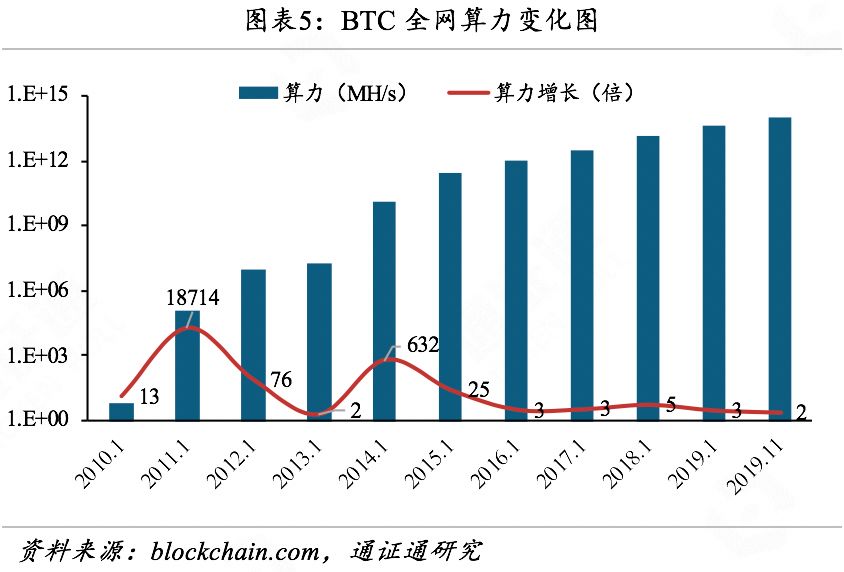
3 BTC mining treasure map
A huge industrial chain has been formed around BTC mining. From the upstream mining machine chip manufacturing to the midstream mining machine production, finally implemented to the "mining" behavior of the mine and pool.

3.1 Mining Machine Manufacturers-Sell Shovel During Gold Rush
As the price of BTC keeps rising, all BTC mining is taken over by professional ASIC miners. At present, the more popular mining machine brands on the market are Yibit, Ant Miner, Avalon and Shenma Mining Machines, which correspond to the four major miners of Ebon International, Bitmain, Canan Yunzhi and Bitwei.

On October 11, 2019, as the leading "mine tyrant", Bitmain officially released the ant mining machine S17 + and T17 + on the official website. The standard computing power of S17 + is as high as 73TH / s. The new mining machine has the characteristics of high computing power, low power consumption and strong stability. It is expected to further consolidate Bitmain's leading position in the mining machine market.
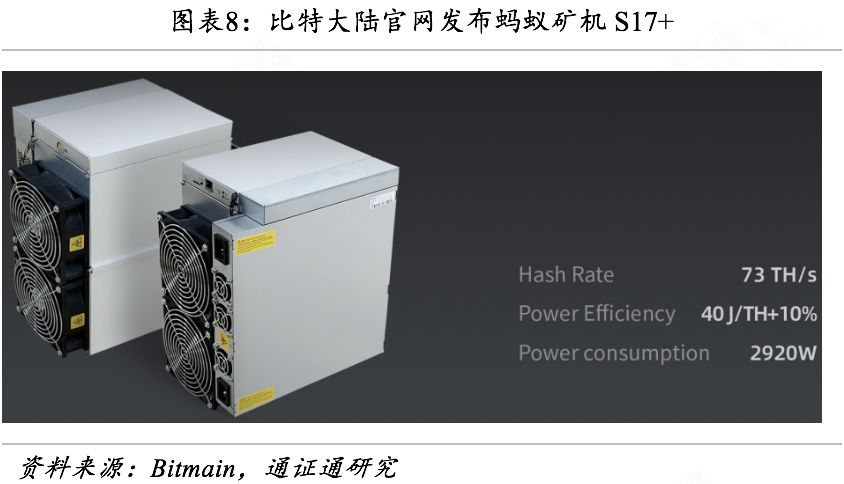
According to the prospectus submitted by Bitmain, Jianan Yunzhi and Yibang International in 2018, the three major miners have made a lot of money in the "gold rush" of BTC mining, becoming a veritable "selling shovel during the gold rush" "Case.
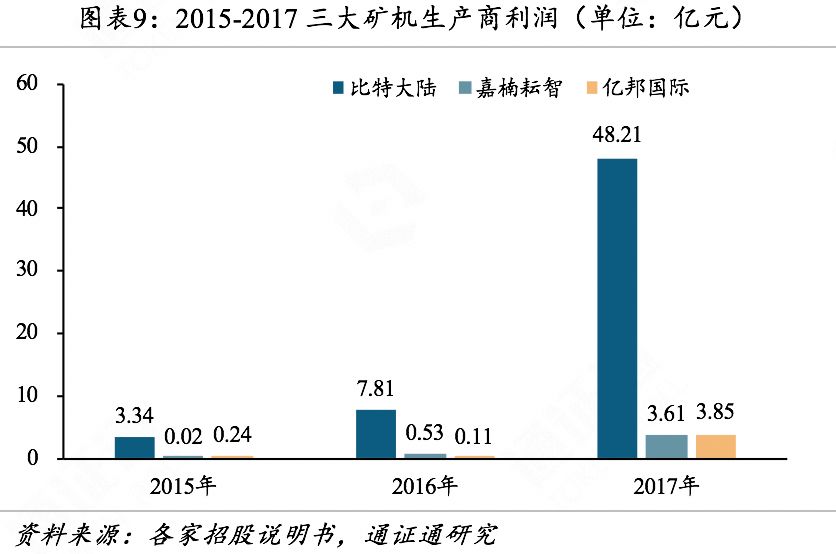
According to the prospectus submitted by Jianan Yunzhi to the U.S. SEC on October 28, 2019, the gross profit margins of 2017, 2018, and the first half of 2019 were 46.2%, 18.8%, and 3.9%, respectively. The sharp fall in the price of BTC is closely related.
On November 22, 2019, Jianan Yunzhi, the second largest mining machine manufacturer, was officially listed and traded on the NASDAQ exchange after being approved by the SEC, becoming the first mining machine manufacturer to be successfully listed .
3.2 Mines-the forefront of the "gold rush"
In 2012, professional mining ASIC mining machines came out, BTC mining officially entered the era of "corporatized operations," and mining farms composed of ASIC mining machines sprung up.
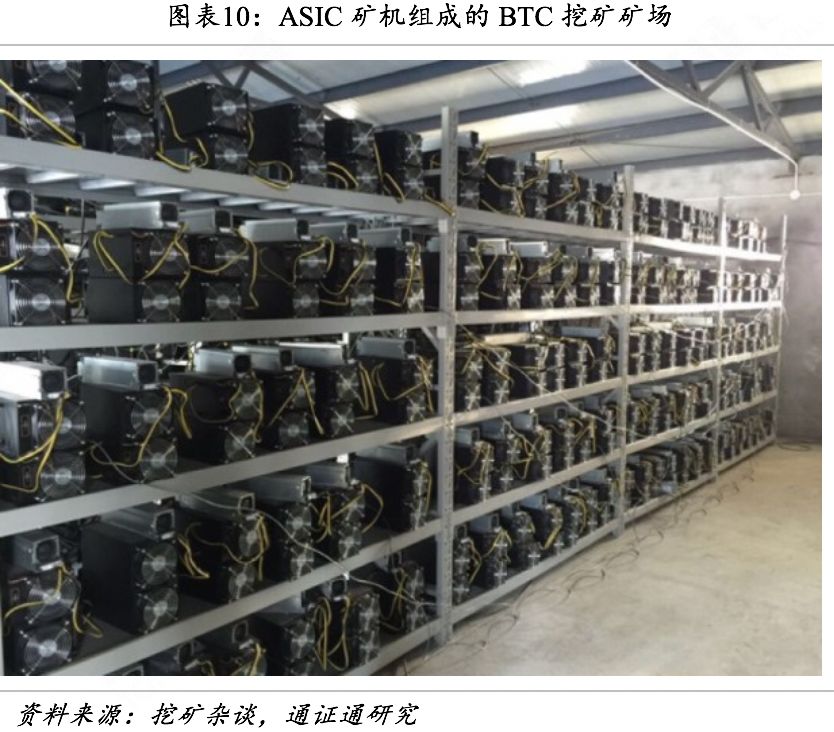
China is the main producer of BTC. According to a report released by CoinShares Research in June 2019, it is estimated that 60% of the world's BTC is produced in China. In Sichuan and other places with abundant hydropower resources, there are a large number of small mines consisting of thousands of mining machines, as well as large mines consisting of tens of thousands of mining machines. The cost of electricity is usually an important consideration for site selection. For example, near the hydropower stations left in the former Soviet Union, and near coal-fired power plants in the desert areas of Inner Mongolia, there are mining sites.
Behind the mine are both large consortiums like Bitmain, and countless small and medium miners who are optimistic about BTC mining revenue. Bitmain's vision is to build the world's largest mining business.On October 18, 2019, Bitmain announced in Texas that it will build a 50 MW mine with Rockdale Development Zone (MDD) and DMG. field.
In a sparsely populated and power-rich place, tens of thousands of mining machines roar in the factories built by the miners and are at the forefront of the "gold rush", and will produce about 1,800 BTC per day before the next halving of BTC.
3.3 Mining Pool-Unity is Strength
A mine is a collection of mining hardware, and a mining pool is a collection of mining machine output.
Miners connect their own mining machines to a certain mining pool, contribute computing power to the mining pool, and jointly mine to obtain revenue, and the revenue is distributed according to the contribution of computing power. As the current mining power of the BTC network is getting higher and higher, the computing power of a single miner is very small (the current computing power of the BTC network is equivalent to the computing power generated by the joint operation of 1.29 million ant miners S17 +), resulting in The mining output is very unstable. At this time, the mining pool emerges as the times require. Miners can join the mining pool to compete with other mining pools through mining pools, which can not only make the income more stable, but also avoid running the full node. Maintain a BTC ledger of nearly 250 G).
At present, the mining pools with large computing power are mainly Poolin, BTC.com, F2Pool and AntPool. BTC.com and AntPool are mining pools owned by Bitmain.

3.4 Cloud mining-a minimalist model for participating in mining
The so-called cloud mining refers to the way that miners purchase cloud computing power directly from institutions or individuals. For example, Bitdeer simplifies the tedious mining steps for customers through the complex links of packaged mining machine purchase, logistics, mine selection, machine maintenance, and mining pool access.
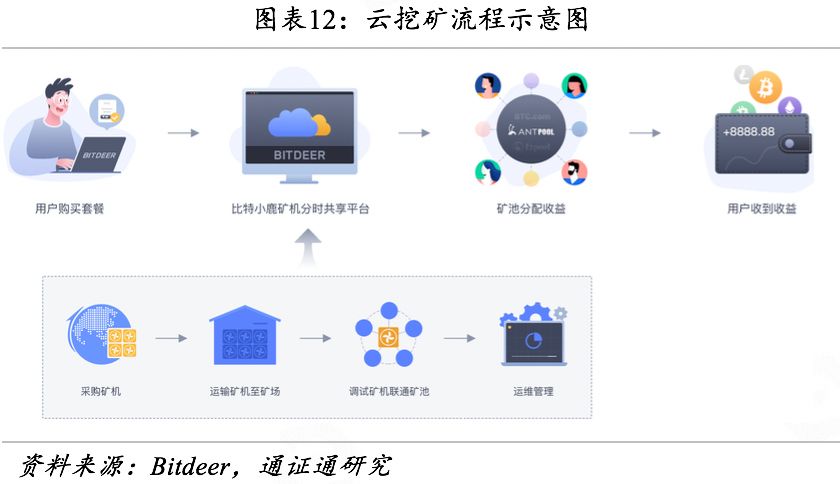
Note: For some reasons, some terms in this article are not very accurate, such as: tokens, digital tokens, digital currencies, currencies, tokens, crowdsale, etc. If you have any questions, you can call us to discuss them.
We will continue to update Blocking; if you have any questions or suggestions, please contact us!
Was this article helpful?
93 out of 132 found this helpful
Related articles
- QKL123 Blockchain List | Domestic media enthusiasm declines, some mining machines lose money (201911)
- Read Monero's Fair Mining Algorithm RandomX
- Seven years after its birth, the number of r / Bitcoin subscribers on Reddit exceeds 1.2 million
- Getting Started with Blockchain | What is DAO?
- Business of second-hand mining machines: business of acquaintances, pits of strangers
- Babbitt weekly selection 丨 Hainan hopes to become a national digital asset trading demonstration zone; Blockchain Service Network (BSN) settles in Hangzhou
- Increase the number of docking exchanges and switch to new blockchains, USDT market share still leads





